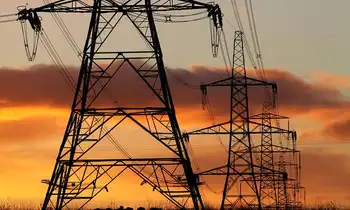There's much riding on power plant
By Marshfield News-Herald
Substation Relay Protection Training
Our customized live online or in‑person group training can be delivered to your staff at your location.

- Live Online
- 12 hours Instructor-led
- Group Training Available
Do the math.
A megawatt is 1,000 kilowatts, the standard of measure for the sale of electricity to consumers. The plant will produce 55,000 kilowatts for an estimated 500 hours a year - or 27.5 million kilowatt hours annually.
If the debt on the plant was retired over 30 years, it'd cost 3.6 cents a kilowatt hour to pay for construction costs. That's a competitive rate in anyone's book, less than half the Wisconsin average.
Add in the fuel and people to run the facility.
Marshfield Utilities generator would be a peaking unit, meaning it'd be switched on only when electricity demand surpassed the capacity of big generators that run 24/7.
Because it'd burn natural gas, with diesel fuel as a backup, Marshfield Utilities' peaking plant would be expensive to operate, with a fuel cost per kilowatt hour higher than a base load plant.
Taking that into account, the premium on Marshfield Utilities' electrical generating plant gets more costly.
There's a fairly complicated financing mechanism, though, that includes selling bonds to raise the $30 million and then paying them back with credits the utility gets because it has the ability to add electricity to the power grid when it's needed.
But is this like a free lunch?
Not if you consider the nitrogen and sulfur dioxide emissions or the depletion of the earth's fossil fuels. No fuel-burning power plants are entirely green, meaning that they don't have any negative effects on the environment, and Marshfield Utilities' plant wouldn't be an exception.
Natural gas is cleaner burning than coal, the fuel that fires the boilers at Wisconsin Public Service Corp.'s big generators south of Wausau, which are the largest in our region. It's not pollution-free, however.
Power plants make noise. There's a din - a constant, annoying noise - coming from the Wausau-area power plants. In the winter it's not too bad unless you live close. In the summer, it's annoying to nearby residential neighborhoods.
That's why Marshfield Utilities' generator would be built in an industrial park. And if it runs only 500 hours a year and then during peak consumption, it'll be switched off all but about 21 days a year, and even when it runs it'll be mostly during daytime, when usage spikes.
Still, Marshfield is on a path toward declaring itself a sustainable community. If it does, it'll look for ways to reduce its reliance on products and technology that harm the environment. There was a Renewable Energy 101 workshop in January at the University of Wisconsin-Marshfield/Wood County. The Groundwater Guardians seek to protect water resources.
The construction of a fossil fuel power plant flies in the face of those initiatives.
But then again, if Marshfield doesn't have a reliable source of electricity, what good are all those compact fluorescent lights anyway? And a peaking unit is all about strengthening the power grid's reliability.
When the environmental impact statement is done, there'll be more to consider than the cost per kilowatt hour or who will pay off the utility revenue bonds. The Public Service Commission is required to weigh it all before approving or denying permits to build the plant.
As citizens, it's our responsibility to hold the commission and Marshfield Utilities accountable, because there's more riding on this ruling than whether the electricity that runs your refrigerator comes from Kewaunee or is made in Marshfield.











